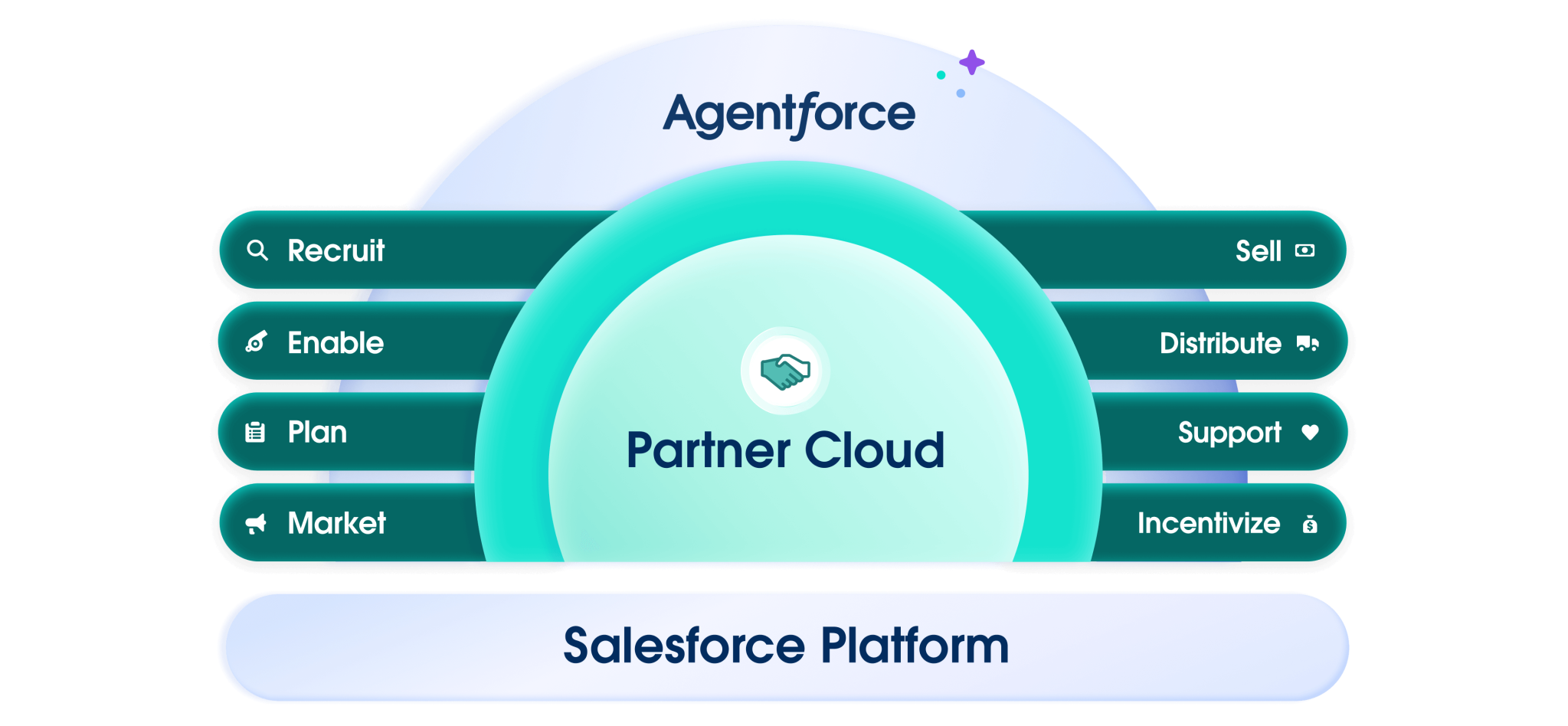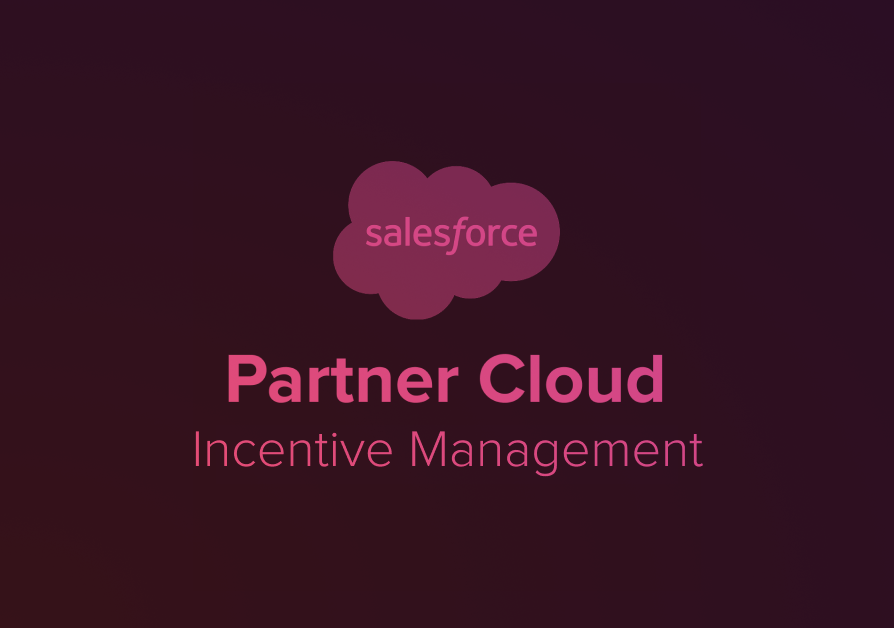What Is PRM in Salesforce: How the New Partner Cloud Can Completely Change Your Game
Most companies still underestimate the power of their partner ecosystem. According to Canalys, over 70% of global B2B revenue now flows through indirect channels, yet many organizations still lack a modern partner relationship management system, relying instead on spreadsheets or outdated tools.
In today’s interconnected market, partners aren’t just distributors or resellers. They’re growth accelerators. The companies that master partner-led growth outperform those relying solely on direct sales. That’s where a modern Partner Relationship Management (PRM) system comes in, aligning people, process, and data for maximum impact.
In this post, we’ll unpack what is PRM, explore the PRM meaning within the Salesforce ecosystem, and take a closer look at the newly launched Salesforce Partner Cloud – a next-generation evolution set to redefine how you scale through your partners.
Decoding PRM: What Does It Really Stand For?
PRM stands for Partner Relationship Management – a coordinated approach of business processes, systems, and strategy to manage relationships with channel partners, distributors, and resellers.
If CRM (Customer Relationship Management) focuses on end customers, PRM software manages your partner ecosystem, extending your CRM systems to other businesses that sell your products.
Without a structured PRM solution, companies struggle with manual data entry, inconsistent onboarding, and poor partners performance visibility. Many still rely on disconnected business tools and fragmented communication, making deal registration and performance tracking inefficient.
Salesforce saw this challenge early and responded with integrated PRM capabilities on its platform, now taken further through Partner Cloud.
Why PRM Matters More Than Ever
The business case for PRM is clear: scalable growth through trusted partnerships. A robust PRM system lets organizations expand through indirect sales, reaching new markets without building new teams. It also enhances lead management, simplifies partner sales processes, and reduces acquisition costs compared to direct sales. By doing partner relationship management on Salesforce, companies can align their sales and channel managers to drive shared success. A strong PRM strategy improves partner performance, accelerates onboarding, and brings predictability to your revenue engine.
Neglecting your partners means missed deals, frustrated teams, and wasted potential. The right PRM tool eliminates friction and turns your ecosystem into a collaborative network built for growth.
Inside Salesforce’s PRM Offering: A Quick Tour
Salesforce’s long-standing PRM solution built on Experience Cloud has powered thousands of partner portals around the world. It offers capabilities that connect sales teams and channel partners within a single platform, ensuring transparency, accountability, and easy collaboration.
Key features include deal tracking, guided onboarding, and integrated analytics for sales metrics and partner success. These capabilities connect seamlessly with CRM data, allowing for smooth transitions between direct and indirect selling motions.
Yet, as partner networks have grown more complex, the need for deeper automation and real-time engagement has pushed Salesforce to evolve, leading to the birth of Partner Cloud.
Meet Partner Cloud: The Next Evolution
Partner Cloud is Salesforce’s new-generation solution purpose-built for the modern partner economy. As reported by Salesforce Ben, it consolidates traditional PRM capabilities and expands them with advanced partner enablement, incentive and loyalty management, and channel revenue management.

image source: Salesforce
It’s fully Salesforce-native, offering deep platform integration with Slack, AI-driven insights, and streamlined workflows. This shift represents Salesforce’s commitment to turning partner management into a connected, intelligent, and scalable experience.
To help companies understand and maximize these features, we’ve launched a series of videos and blog posts called Salesforce Partner Cloud Fundamentals. In this series, we dive deep into different Partner Cloud functionalities, from onboarding and deal tracking to rebates and incentive management. Watch the latest episode and explore practical tips for implementing Partner Cloud successfully ⬇️
Salesforce Partner Cloud Fundamentals: Mastering Advanced Commission Structures with Salesforce Spiff

Game-Changer Features: What Makes Partner Cloud Stand Out
Seamless Onboarding & Partner Journey
Partner Cloud redefines the onboarding process by allowing partners to register through self-service portals and immediately access guided, personalized journeys. Every step, from sign-up to enablement, happens within a unified environment, making it easy for partners to learn, certify, and quickly start engaging with your offerings. The result is a faster ramp-up period and a consistent experience that reflects your brand’s professionalism and support.
End-to-End Deal & Co-Sell Collaboration
With Partner Cloud, vendors and partners can collaborate on opportunities in real time. Deals are registered and tracked within Salesforce, ensuring both internal and partner teams share a unified view of the pipeline. Integrated Slack channels and Salesforce workflows keep communication fluid, reducing silos and improving alignment. This connected experience shortens sales cycles and makes co-selling feel seamless and transparent.
Incentives, Rewards & Channel Revenue Insights
Salesforce built Partner Cloud to handle the complexities of incentive programs and channel revenue management natively. Companies can create and manage rebates, loyalty rewards, and partner tiers while giving partners instant visibility into their earnings and performance. This transparency strengthens motivation, drives accountability, and helps partners understand exactly how their efforts translate into results.
Native Platform + Intelligence
Being fully native to Salesforce gives Partner Cloud a major advantage: all partner data lives within the same ecosystem as your customers, opportunities, and forecasts. Built-in AI provides intelligent scoring and predictive insights, while automated workflows simplify approvals, renewals, and reporting. Instead of managing disconnected tools, teams operate from a single intelligent platform designed to scale partner operations efficiently and strategically.
When Is Partner Cloud the Right Move for Your Business?
Partner Cloud becomes the right choice when your organization already operates a partner program and relies on Salesforce as its core CRM platform. It’s particularly suited for companies that have outgrown basic partner portals and need a more advanced system for managing co-selling, incentives, and real-time visibility into partner activities.
This solution is a natural fit for businesses with established or rapidly expanding partner ecosystems, especially in industries like technology and manufacturing, where collaboration among channel partners directly influences growth. To get the most from Partner Cloud, companies should already have a mature partner strategy, clearly defined partner roles, and a willingness to invest in proper configuration, change management, and adoption planning.
Pitfalls to Watch & Implementation Tips
Even the best partner relationship management system can’t fix an unclear strategy. Many organizations struggle because of poor data hygiene, undefined partner processes, lack of executive sponsorship, or insufficient training for both internal users and partners. According to G2 reviewers, Salesforce Partner Cloud is powerful but requires thoughtful setup and ongoing education to deliver its full potential.
To implement successfully, start by defining measurable goals and segmenting your partners according to their roles and contribution potential. Map out the partner lifecycle in detail before configuring the system, then run a pilot with a small, representative partner group. Involving partners early in the design process ensures buy-in and usability. Once live, track adoption, monitor engagement metrics, and refine your processes continuously to achieve sustainable success.
Looking Ahead: The Future of Partner Ecosystems in a Salesforce World
Partner programs are evolving fast: from transactional relationships to ecosystem alliances. Companies now co-market, co-sell, and co-innovate with their partners.
Salesforce Partner Cloud positions organizations for this future: built for enablement, learning, and shared outcomes, not just deal registration. Future roadmap areas include deeper inventory optimization and manufacturing-specific use cases.
As the partner economy matures, PRM will become as essential as CRM once was.
Time to Re‑Think Your Partner Strategy
Your partners aren’t just resale channels, they’re extensions of your brand and your growth engine.
If you’ve been wondering what is PRM, or what does PRM stand for, the answer is simple: it’s the framework that lets you manage, motivate, and multiply your partner success.
With Salesforce Partner Cloud, you can transform how you work with partners, aligning strategy, data, and collaboration in one connected system. And if you’re looking for expert help to make that transformation happen, Advanced Communities brings years of experience building partner portals, PRM systems, and entire ecosystems on the Salesforce platform.
Evaluate your current partner operations. Identify gaps in engagement, visibility, and incentives. Consider engaging with a qualified consulting partner like Advanced Communities. Book a personalized demo to see how you can empower your partners and empower your growth.
FAQ
What is PRM in business?
PRM, or Partner Relationship Management, is a strategy and system for managing relationships with channel partners, resellers, distributors, and other business collaborators. In practice, a PRM system streamlines partner sales, onboarding, deal monitoring, performance tracking, and collaboration with internal sales teams, helping businesses grow revenue through indirect sales channels instead of relying solely on direct sales.
What is Salesforce Partner Cloud?
Salesforce Partner Cloud is the next-generation PRM software built on the Salesforce platform. It provides an integrated environment for partner sales, onboarding, incentives, and performance tracking, while offering AI-powered insights and automation. Partner Cloud unifies all aspects of partner engagement, making collaboration between sales teams and channel partners seamless and scalable.
How does PRM differ from CRM?
While CRM systems focus on managing relationships with end customers, a PRM solution is designed for partners. It manages leads, co-selling, incentive programs, and partners performance tracking. Together, CRM and PRM provide a unified approach to revenue growth, addressing different audiences and business processes.
Who should use a PRM system?
Any company or organization that relies on indirect sales through channel partners can benefit from a PRM system. It is particularly useful for channel managers, sales teams, and executives overseeing partner engagement, optimizing business processes, and increasing partner sales performance.





